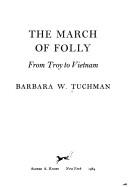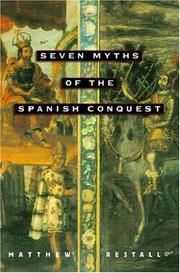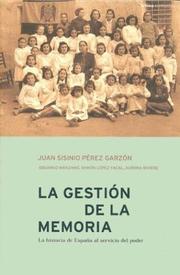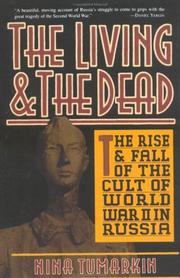Book
ISBN: 9782755506914 2755506911 Year: 2012 Publisher: Paris: Fayard,
Abstract | Keywords | Export | Availability | Bookmark
 Loading...
Loading...Choose an application
- Reference Manager
- EndNote
- RefWorks (Direct export to RefWorks)
Histoire --- --Imagination --- --Document administratif --- --Méthodologie --- --Critique historique --- --Histoire --- Imagination --- Document administratif --- Méthodologie --- Critique historique --- Transmission de textes --- Erreurs, inventions, etc. --- Sources --- Faux
Book
ISBN: 5020271217 9785020271210 Year: 2004 Publisher: Sankt-Peterburg : Nauka,
Abstract | Keywords | Export | Availability | Bookmark
 Loading...
Loading...Choose an application
- Reference Manager
- EndNote
- RefWorks (Direct export to RefWorks)
Mythologie slave. --- Mythology, Slavic. --- Slaves de l'Est --- Slavs, Eastern --- Histoire --- Erreurs, inventions, etc. --- History --- Errors, inventions, etc. --- Vlesova kniga. --- Eastern Europe. --- Europe de l'Est --- Europe, Eastern

ISBN: 0394527771 Year: 1984 Publisher: New York : Knopf : Distributed by Random House,
Abstract | Keywords | Export | Availability | Bookmark
 Loading...
Loading...Choose an application
- Reference Manager
- EndNote
- RefWorks (Direct export to RefWorks)
History, Modern. --- History --- Power (Social sciences) --- Judgment. --- Histoire moderne et contemporaine --- Histoire --- Pouvoir (Sciences sociales) --- Jugement --- Errors, inventions, etc. --- Erreurs, inventions, etc.

ISBN: 0195160770 Year: 2003 Publisher: Oxford New York Tokyo Oxford University Press
Abstract | Keywords | Export | Availability | Bookmark
 Loading...
Loading...Choose an application
- Reference Manager
- EndNote
- RefWorks (Direct export to RefWorks)
Myth --- Mythe --- Spaniards --- Myth. --- Espagnols --- Historiography. --- Historiographie --- Mexico --- Latin America --- Mexique --- Amérique latine --- History --- Errors, inventions, etc. --- Histoire --- Erreurs, inventions, etc. --- Amérique latine --- Conquest, 1519-1540 --- Historiography --- America
Book
ISBN: 9782355480683 Year: 2012 Publisher: Tusson Du Lérot, éditeur
Abstract | Keywords | Export | Availability | Bookmark
 Loading...
Loading...Choose an application
- Reference Manager
- EndNote
- RefWorks (Direct export to RefWorks)
Literary forgeries and mystifications. --- History --- Deception in literature. --- Faux et supercheries littéraires --- Histoire --- Tromperie dans la littérature --- Errors, inventions, etc. --- Erreurs, inventions, etc. --- Masson, Paul, --- Faux et supercheries littéraires --- Tromperie dans la littérature
Book
ISBN: 291157642X 2251741232 2251902430 Year: 2004 Publisher: Amiens : Encrage,
Abstract | Keywords | Export | Availability | Bookmark
 Loading...
Loading...Choose an application
- Reference Manager
- EndNote
- RefWorks (Direct export to RefWorks)
Utopias --- History --- Literature and history --- Utopies --- Histoire --- Littérature et histoire --- Philosophy --- Errors, inventions, etc. --- Philosophie --- Erreurs, inventions, etc. --- 82-313.2 --- Utopische roman --- 82-313.2 Utopische roman --- Littérature et histoire
Book
ISBN: 9782864326168 2864326167 Year: 2006 Publisher: Paris: Verdier,
Abstract | Keywords | Export | Availability | Bookmark
 Loading...
Loading...Choose an application
- Reference Manager
- EndNote
- RefWorks (Direct export to RefWorks)
Historiography. --- Literature and history. --- History --- Historiographie --- Littérature et histoire --- Histoire --- Errors, inventions, etc. --- Erreurs, inventions, etc. --- Faux --- --Histoire --- --Historiographie --- --Historiography. --- Historiography --- Littérature et histoire --- Ginzburg, Carlo (1939-....) --- Mythologie --- Légendes --- Vérité --- Faux (philosophie) --- Contribution à la philosophie de l'histoire
Book
ISBN: 9782894487105 Year: 2012 Publisher: Sillery : SEPTENTRION,
Abstract | Keywords | Export | Availability | Bookmark
 Loading...
Loading...Choose an application
- Reference Manager
- EndNote
- RefWorks (Direct export to RefWorks)
On investit moins au Québec. La prostitution est le plus vieux métier du monde. On utilise 10% de son cerveau. La mondialisation est un phénomène nouveau. Les terroristes musulmans veulent tout détruire. Il n'existe aucune solution au conflit israélo-palestinien. C'est faux! Des chercheurs spécialisés dans chacun des domaines abordés (la démographie, l'économie, la prostitution, l'intelligence humaine, la mondialisation, le terrorisme et le Moyen-Orient) réfutent toute affirmation qui se prétend être vraie pour en éradiquer la contagion.
History --- Globalization --- Prostitution --- Terrorism --- Arab-Israeli conflict --- Demography --- Histoire --- Mondialisation --- Terrorisme --- Conflit israélo-arabe --- Démographie --- Errors, inventions, etc. --- Religious aspects --- Islam --- Erreurs, inventions, etc. --- Aspect religieux --- Québec (Province) --- Economic conditions --- Conditions économiques

ISBN: 8484321223 Year: 2000 Publisher: Barcelona : Crítica,
Abstract | Keywords | Export | Availability | Bookmark
 Loading...
Loading...Choose an application
- Reference Manager
- EndNote
- RefWorks (Direct export to RefWorks)
Education --- Nationalism --- Education, Effets du nationalisme sur l' --- Nationalisme --- Effect of nationalism on --- History --- Histoire --- Spain --- Espagne --- Study and teaching. --- Errors, inventions, etc. --- Historiography. --- Etude et enseignement --- Erreurs, inventions, etc --- Historiographie

ISBN: 9780465041442 0465041442 Year: 1994 Publisher: New York, NY : Basic Books,
Abstract | Keywords | Export | Availability | Bookmark
 Loading...
Loading...Choose an application
- Reference Manager
- EndNote
- RefWorks (Direct export to RefWorks)
World War II killed some thirty million Soviet citizens and transformed the lives of survivors and their descendants. It was the defining ordeal that shaped the history of the Soviet behemoth in the past half-century. The Living and the Dead weaves together the tangled threads of the war's memory in the Soviet Union and Russia. This moving account of a suffering people's struggle with brutal history shows how state and party authorities stage-managed a national trauma into a heroic exploit that glorified the Communist partywhile systematically concealing the disastrous mistakes and criminal cruelties committed by the Stalinist tyranny. Nina Tumarkin explores the nature and fate of the myth, beginning in 1941, when Germany launched its catastrophic "Operation Barbarossa." She shows how Stalin first memorialized the war as heroic, triumphal, even messianic, but then demoted the myth because it had produced too many popular heroes and stories of personal initiative. The cult reached its apogee under Brezhnev. The second half of the book relates the poignant story of the cult's demise from 1990 onward, serving as a prism to refract the spectrum of popular responses to the breakup of the Union of Soviet Socialist Republics. To research the book, Tumarkin strolled with veterans in Gorky Park on Victory days, studied with Russian Army officers, and, with her own hands, unearthed the bones of some of the estimated two to three million Soviet soldiers killed in World War II but never properly buried. The author deftly interweaves into her narrative candid autobiographical sketches focusing on her own encounters with death as well as the remembrances of her Russian emigre family. A new model for bringing history to life through personal engagement and interaction, the book also helps us understand the roots of contemporary Russians' preoccupation with their nation's greatness. The Living and the Dead shows us where the Russian colossus has been - and where it may be headed.
World War, 1939-1945 --- Public opinion --- Cults --- 2ème guerre mondiale --- Opinion publique --- Cultes --- Public opinion. --- Influence. --- Influence --- URSS --- Soviet Union --- History --- Errors, inventions, etc. --- Histoire --- Erreurs, inventions, etc.

 Search
Search Feedback
Feedback About UniCat
About UniCat  Help
Help News
News